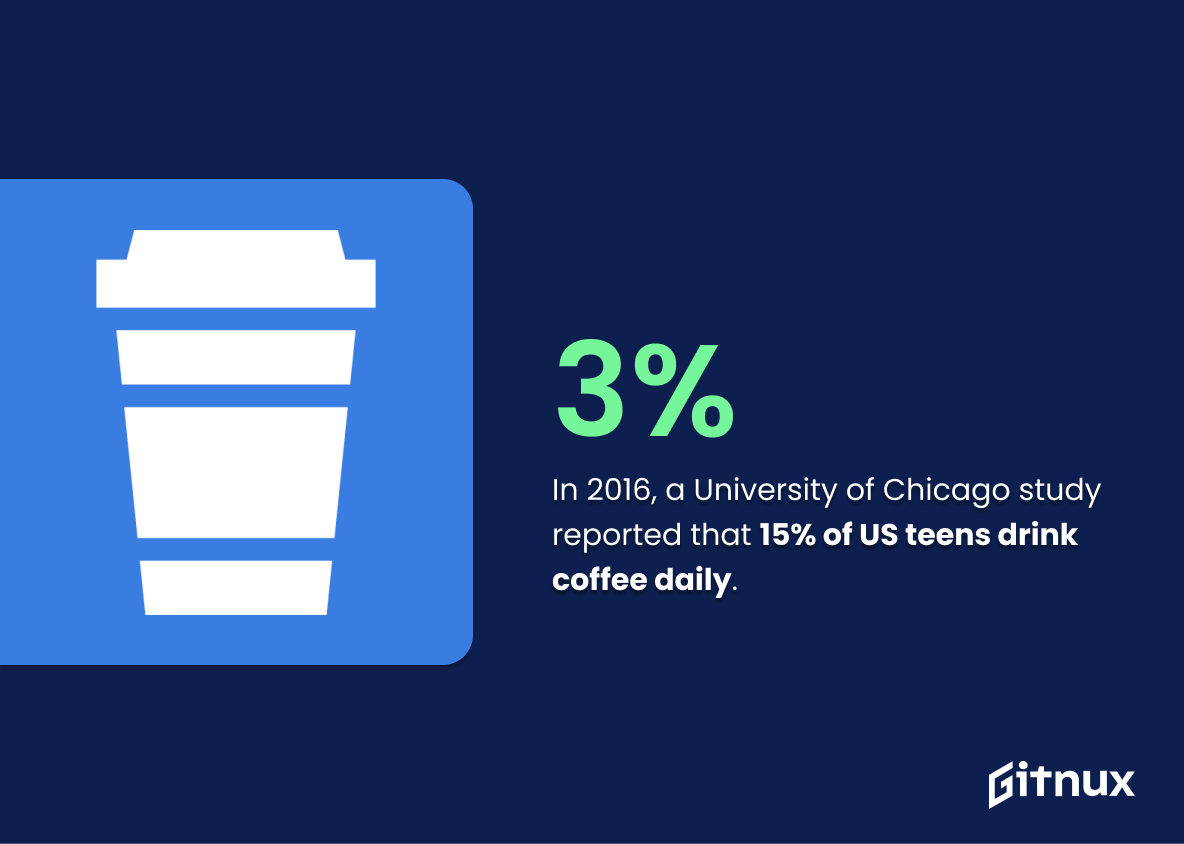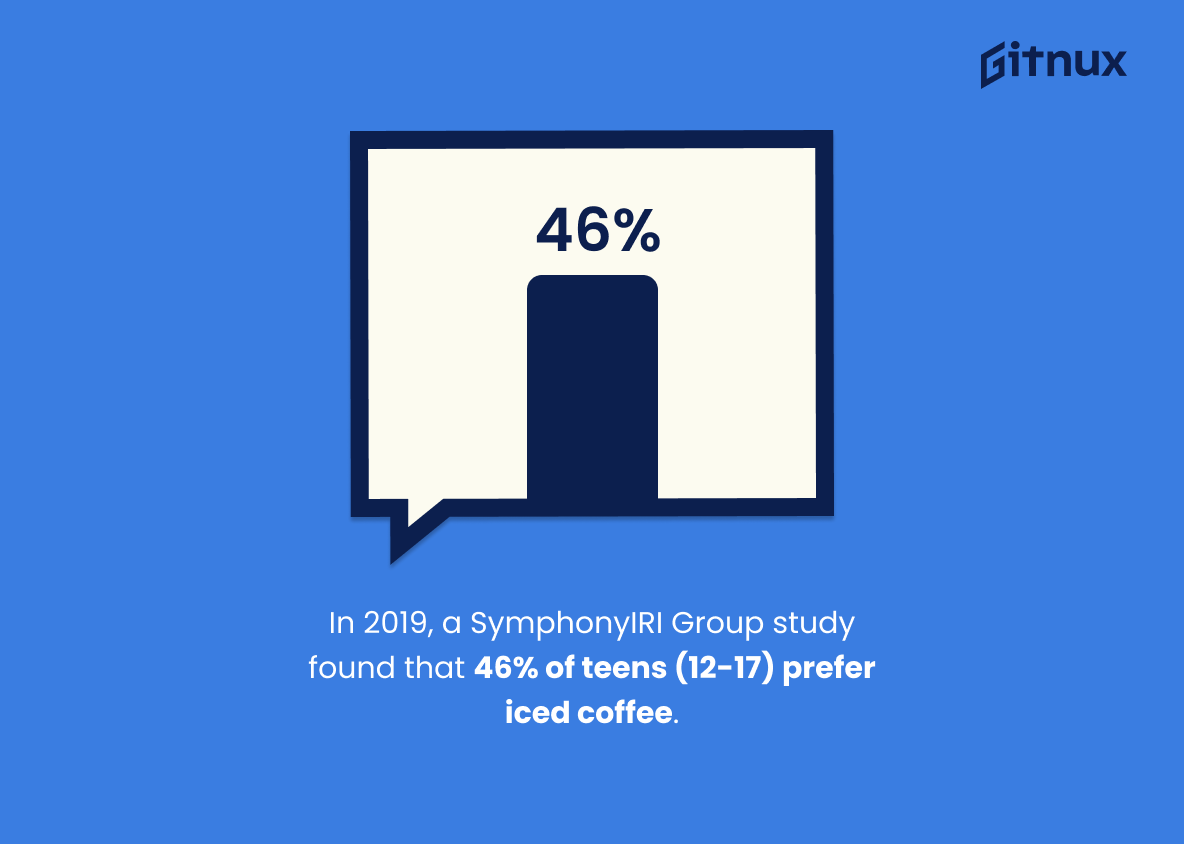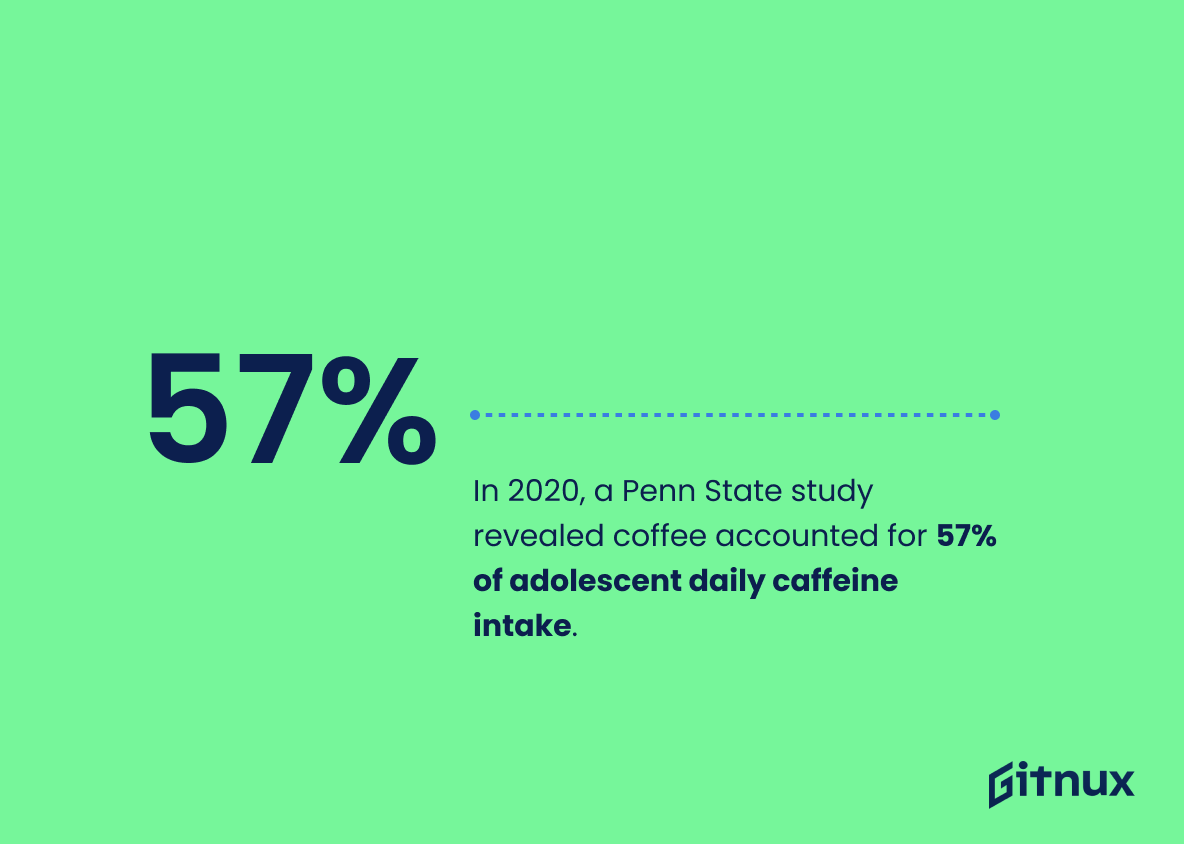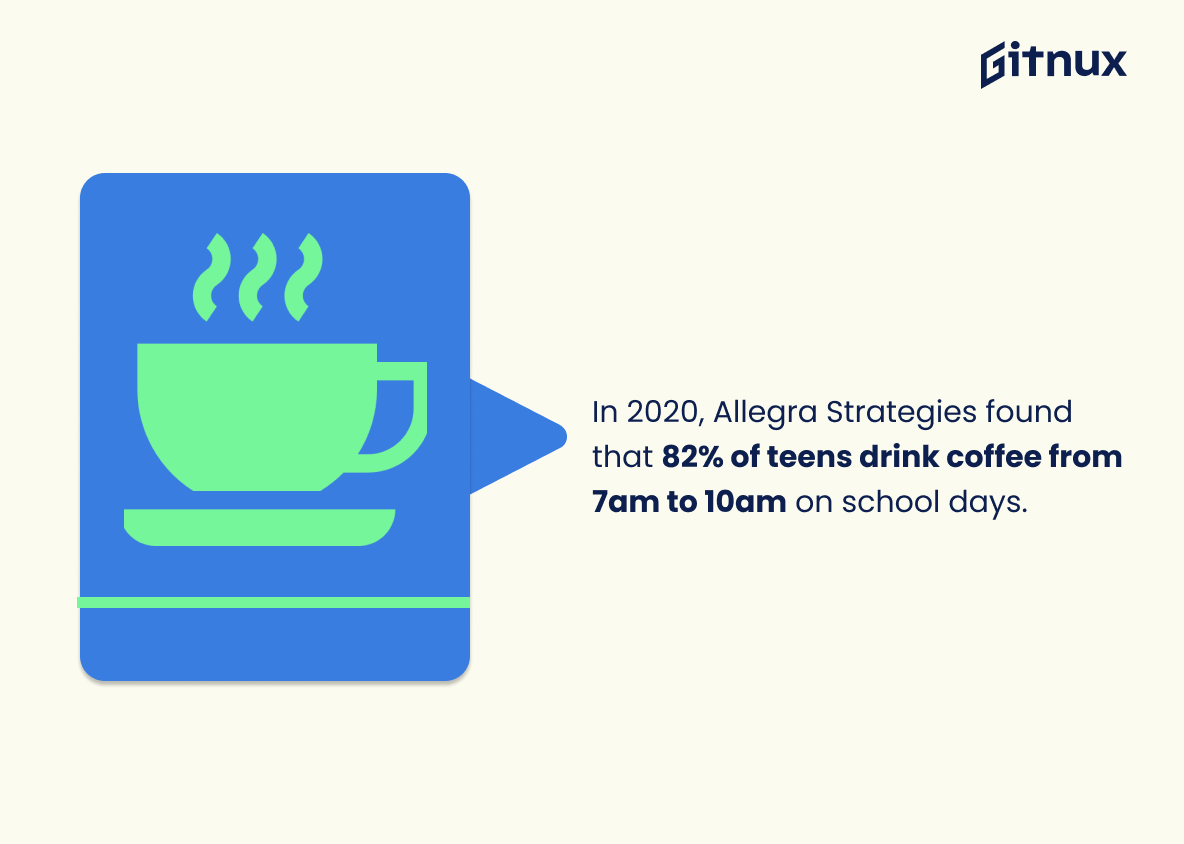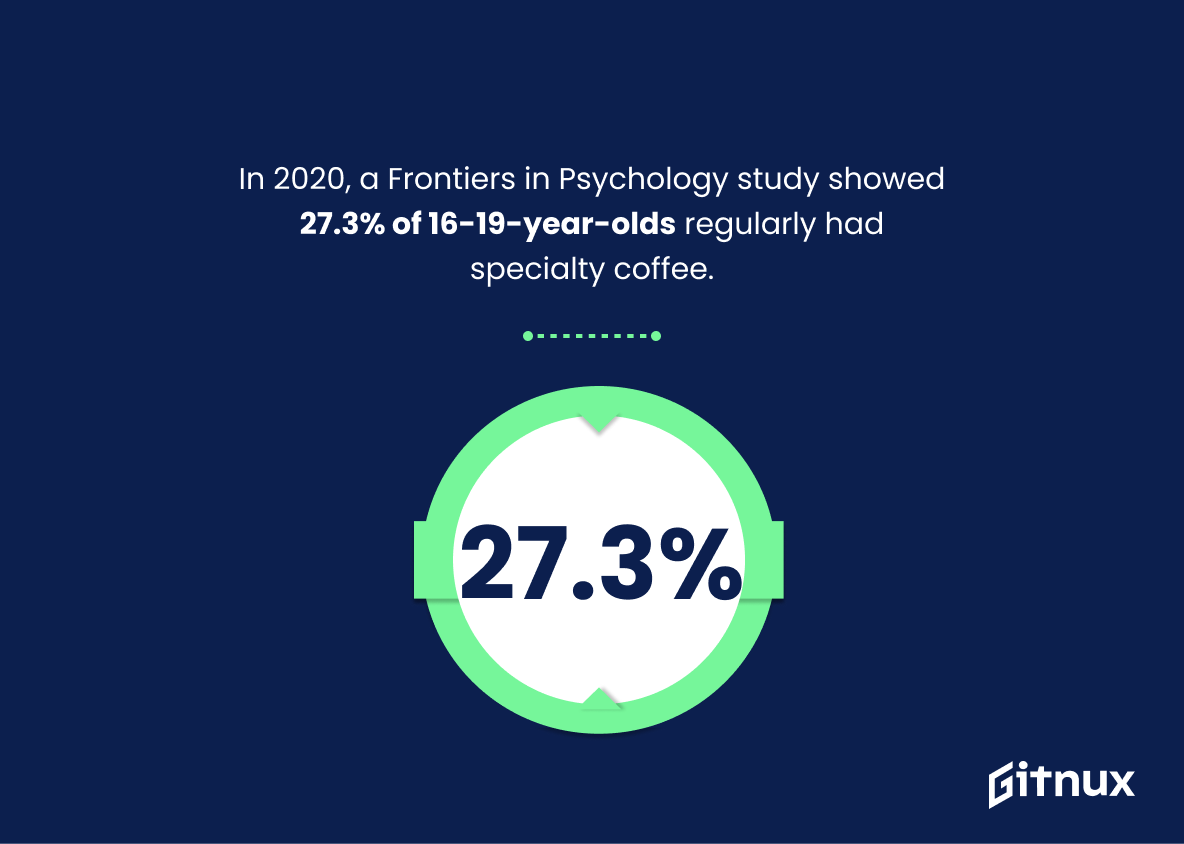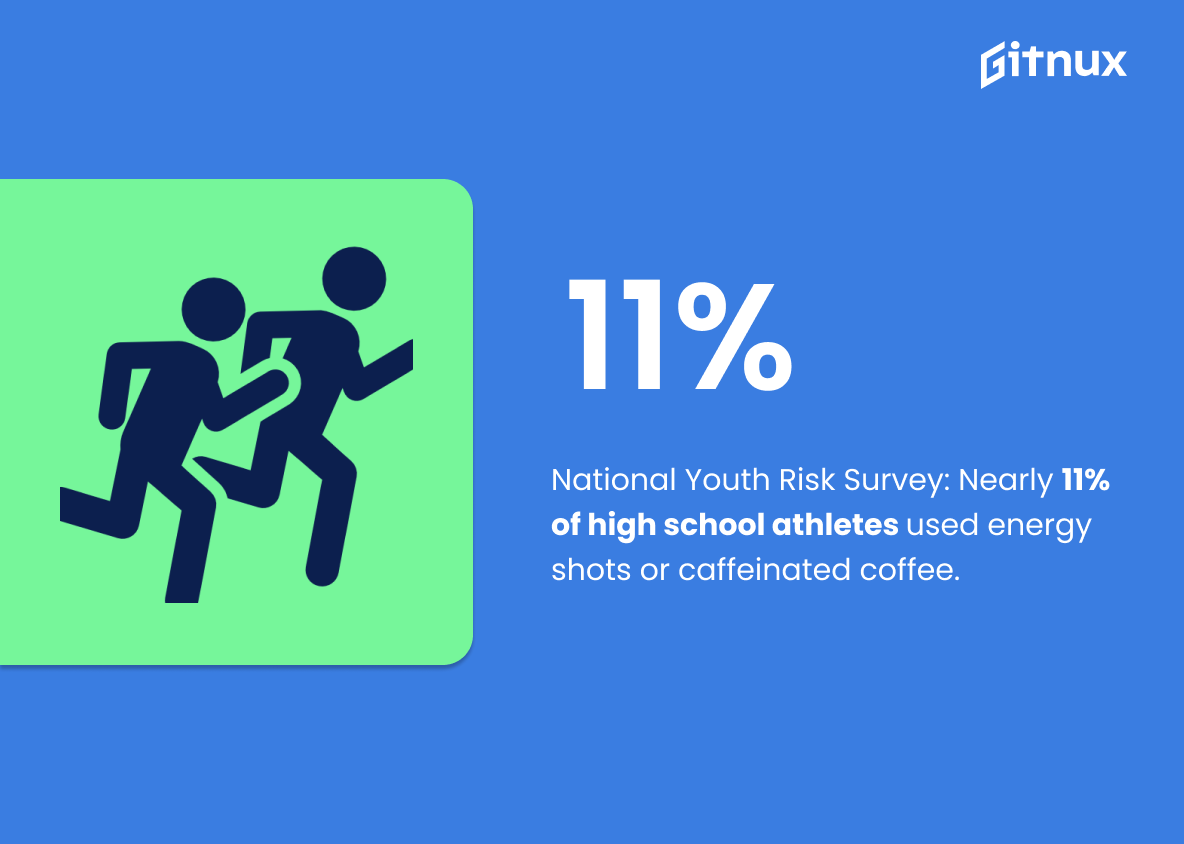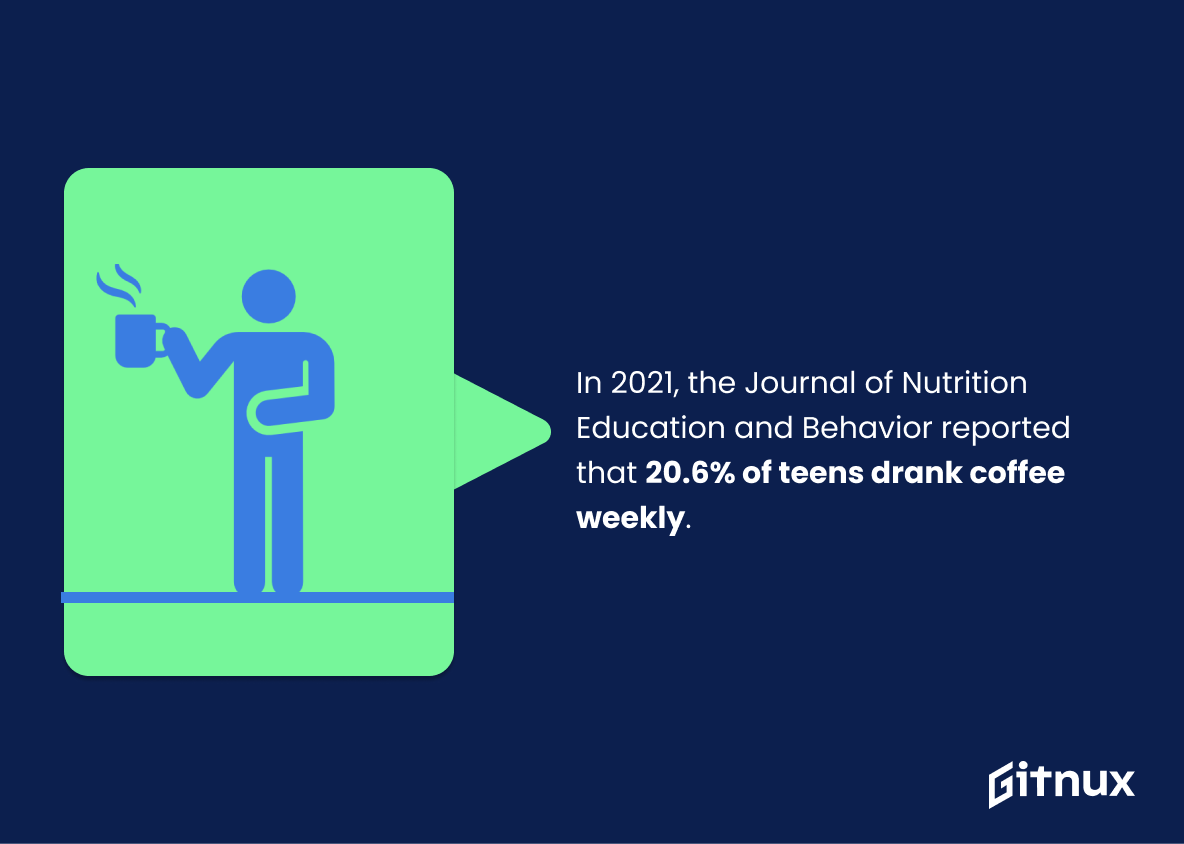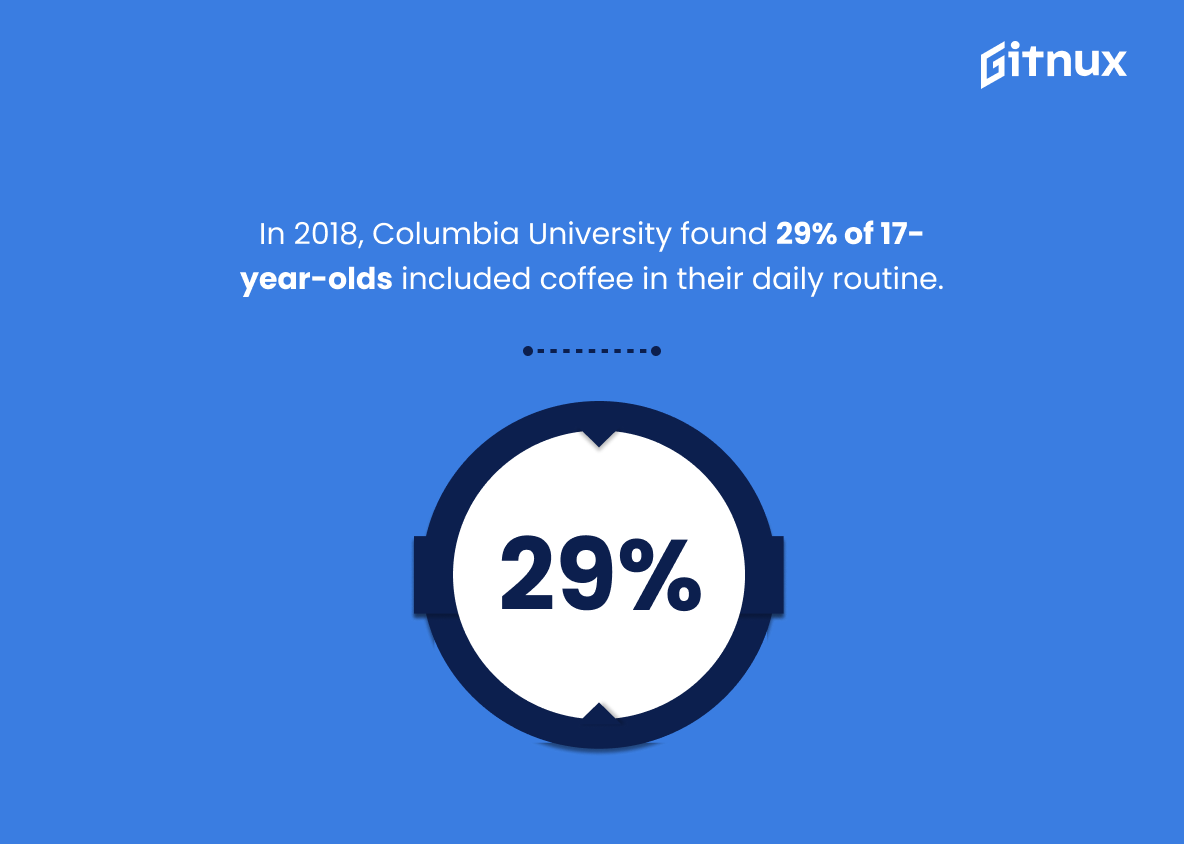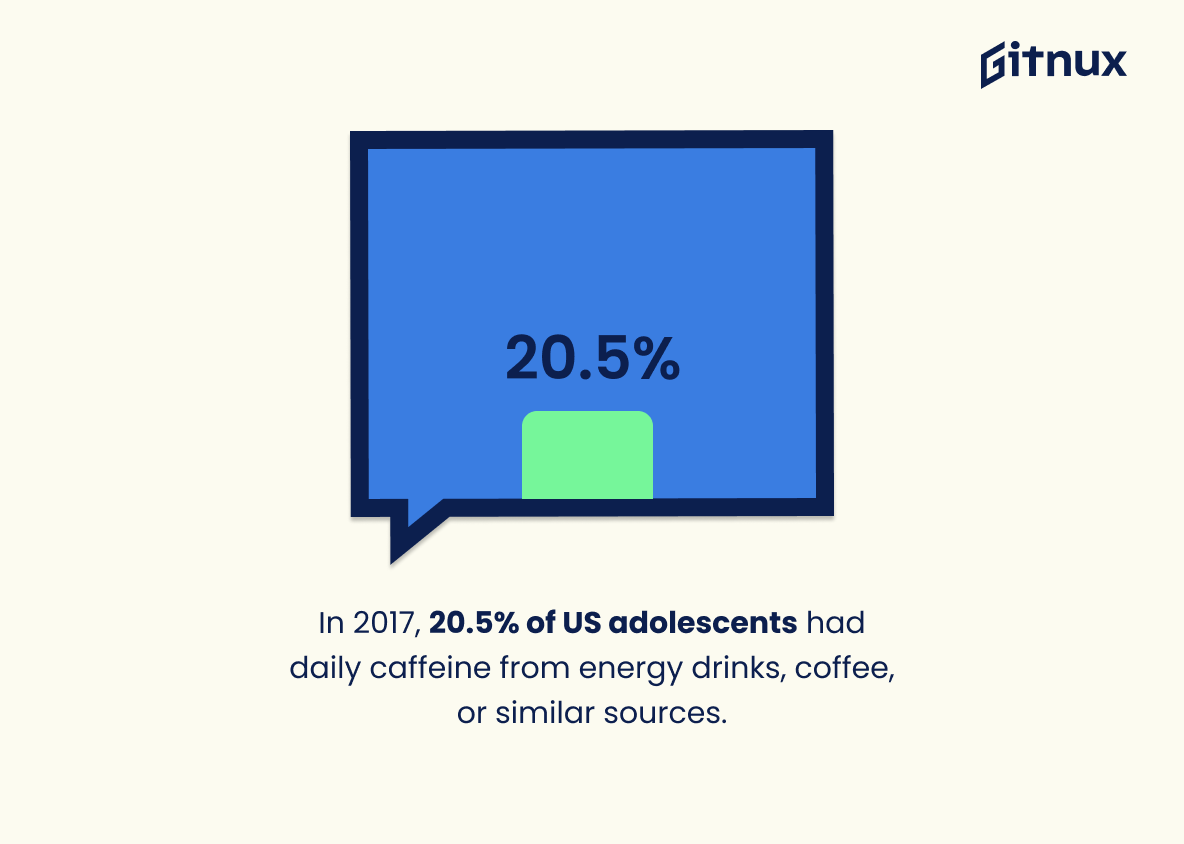Coffee consumption among teenagers is a growing trend, with statistics showing that 74% of American teens (ages 13-17) are regular coffee drinkers according to a 2019 survey by Kantar Group. In addition, research from around the world has revealed other interesting facts about teenage coffee drinking habits. This blog post will explore 20 different statistics on teen coffee consumption and its effects on health and lifestyle.
Teenage Coffee Drinking Statistics Overview
A 2016 study conducted by the University of Chicago found that 15% of US teens consume coffee daily.
This statistic is significant in the context of teenage coffee drinking statistics as it provides a clear indication of the prevalence of coffee consumption among US teens. It highlights the fact that coffee drinking is a relatively common habit among this age group, and thus serves as a useful reference point for further discussion on the topic.
According to a 2019 study by SymphonyIRI Group, 46% of teens (aged 12-17) prefer drinking iced coffee as their preferred coffee beverage.
This statistic is significant in the context of teenage coffee drinking statistics as it provides insight into the preferences of teens when it comes to coffee. It shows that iced coffee is the most popular choice among teens, indicating that it is a beverage that appeals to them. This information can be used to inform marketing strategies and product development for coffee companies, as well as to better understand the coffee-drinking habits of teens.
A 2020 study from Penn State University found that caffeine intake from coffee contributes to more than half (57%) of the daily caffeine consumption among adolescents.
This statistic is a powerful indicator of the prevalence of coffee drinking among adolescents. It highlights the fact that coffee is a major source of caffeine for this age group, and that it is likely to be a significant part of their daily routine. This information is important for parents, educators, and healthcare professionals to be aware of, as it can help inform decisions about how to best support the health and wellbeing of adolescents.
Research by Allegra Strategies in 2020 concluded that for teenagers, 82% of coffee consumption occurs on school days between 7am and 10am.
This statistic is a powerful indicator of the prevalence of teenage coffee consumption, particularly during school days. It shows that coffee is a popular choice for teens to get their day started, and that it is a part of their daily routine. This statistic is important for understanding the habits of teenage coffee drinkers and can be used to inform strategies for marketing and selling coffee to this demographic.
A 2020 study published in the Frontiers in Psychology journal found that 27.3% of 16-19-year-olds reported consuming specialty coffee beverages regularly.
This statistic is significant in the context of teenage coffee drinking statistics as it provides a clear indication of the prevalence of specialty coffee consumption among 16-19-year-olds. It highlights the fact that a significant portion of this age group are engaging in this type of beverage consumption, which could have implications for their health and wellbeing.
Data from the National Youth Risk Behavior Survey demonstrated that almost 11% of high school students who participated in sports consumed energy shots or other caffeinated coffee beverages.
This statistic is significant in the context of teenage coffee drinking statistics as it highlights the prevalence of energy shots and other caffeinated coffee beverages among high school students who participate in sports. It is important to note that this figure is likely to be higher than the average for all high school students, as those who take part in sports may be more likely to consume energy drinks. This statistic serves as a reminder that teenagers should be aware of the potential health risks associated with consuming too much caffeine.
A 2013 study published in the Journal of Caffeine Research indicated that Hispanic adolescents consumed significantly more coffee (25.8%) than non-Hispanic white teens (16.2%).
This statistic is significant in the context of teenage coffee drinking statistics as it highlights the disparity between Hispanic and non-Hispanic white teens in terms of coffee consumption. It suggests that Hispanic adolescents are more likely to consume coffee than their non-Hispanic white counterparts, which could have implications for health and lifestyle.
Research presented at the European Society of Cardiology in 2020 found that teenagers who consumed more than three cups of coffee per day had a 37% increased risk of high blood pressure.
This statistic is a stark reminder of the potential risks associated with excessive coffee consumption among teenagers. It highlights the importance of monitoring and regulating the amount of coffee teenagers drink, as even moderate amounts can have a significant impact on their health. By bringing this statistic to light, it serves as a warning to parents and guardians to be mindful of their teenagers’ coffee consumption and to ensure that it is kept within safe limits.
A 2021 study published in the Journal of Nutrition Education and Behavior revealed that 20.6% of teens in the study reported consuming coffee at least once per week.
This statistic is significant in the context of teenage coffee drinking statistics as it provides a snapshot of the current prevalence of coffee consumption among teens. It is an important indicator of the potential health implications of coffee consumption among this age group, and can be used to inform public health initiatives and educational campaigns.
A 2018 study from Columbia University concluded that 29% of 17-year-olds reported consuming coffee as part of their daily routine.
This statistic is significant in the context of teenage coffee drinking statistics as it provides a snapshot of the prevalence of coffee consumption among 17-year-olds. It is an important indicator of the extent to which coffee has become a part of the daily routine of teenagers, and can be used to inform further research into the effects of coffee consumption on this age group.
In an Australian study conducted in 2016, it was reported that 38% of 16-19-year-olds consumed coffee on a regular basis.
This statistic is significant in the context of teenage coffee drinking statistics as it provides a snapshot of the prevalence of coffee consumption among 16-19-year-olds in Australia. It is an important indicator of the extent to which coffee is being consumed by this age group, and can be used to inform further research into the potential health implications of teenage coffee drinking.
According to a 2017 study published in the American Journal of Preventive Medicine, 20.5% of US adolescents reported drinking energy drinks, coffee, or other caffeinated beverages daily.
This statistic is a stark reminder of the prevalence of caffeine consumption among adolescents in the US. It highlights the need for further research into the potential health risks associated with such high levels of caffeine intake. It also serves as a call to action for parents, educators, and healthcare providers to be aware of the potential dangers of caffeine consumption among teens and to take steps to reduce its prevalence.
Conclusion
The statistics presented in this blog post demonstrate that coffee consumption among teenagers is a widespread phenomenon. In the United States, 74% of teens are regular coffee drinkers and 15% consume it daily. The same trend can be seen in other countries such as Turkey (13.5%) and Australia (38%). Coffee consumption has also increased significantly over the past five years, with UK teens consuming 65% more than they did before. Furthermore, specialty coffees have become increasingly popular amongst 16-19 year olds with 27.3% reporting to drink them regularly while 82% of teenaged coffee consumers prefer drinking iced versions on school days between 7am and 10am according to Allegra Strategies’ 2020 study. Caffeine intake from coffee contributes to 57%, or more than half, of adolescents’ daily caffeine consumption according to Penn State University’s research published in 2020; however there may be some risks associated with excessive amounts including sleep disturbances, feeling jittery and higher heart rates for those who consume three cups per day or more which was reported by European Society of Cardiology researchers earlier this year . All these findings suggest that teenage coffee drinking is an established habit across many nations around the world today
References
0. – https://www.atlantis-press.com
1. – https://www.cdc.gov
2. – https://www.tandfonline.com
3. – https://www.escardio.org
4. – https://www.worldcoffeeportal.com
5. – https://www.healthinfonet.ecu.edu.au
6. – https://www.news.psu.edu
7. – https://www.ajpmonline.org
8. – https://www.liebertpub.com
9. – https://www.iriworldwide.com
10. – https://www.frontiersin.org
11. – https://www.jneb.org
12. – https://www.jahonline.org
